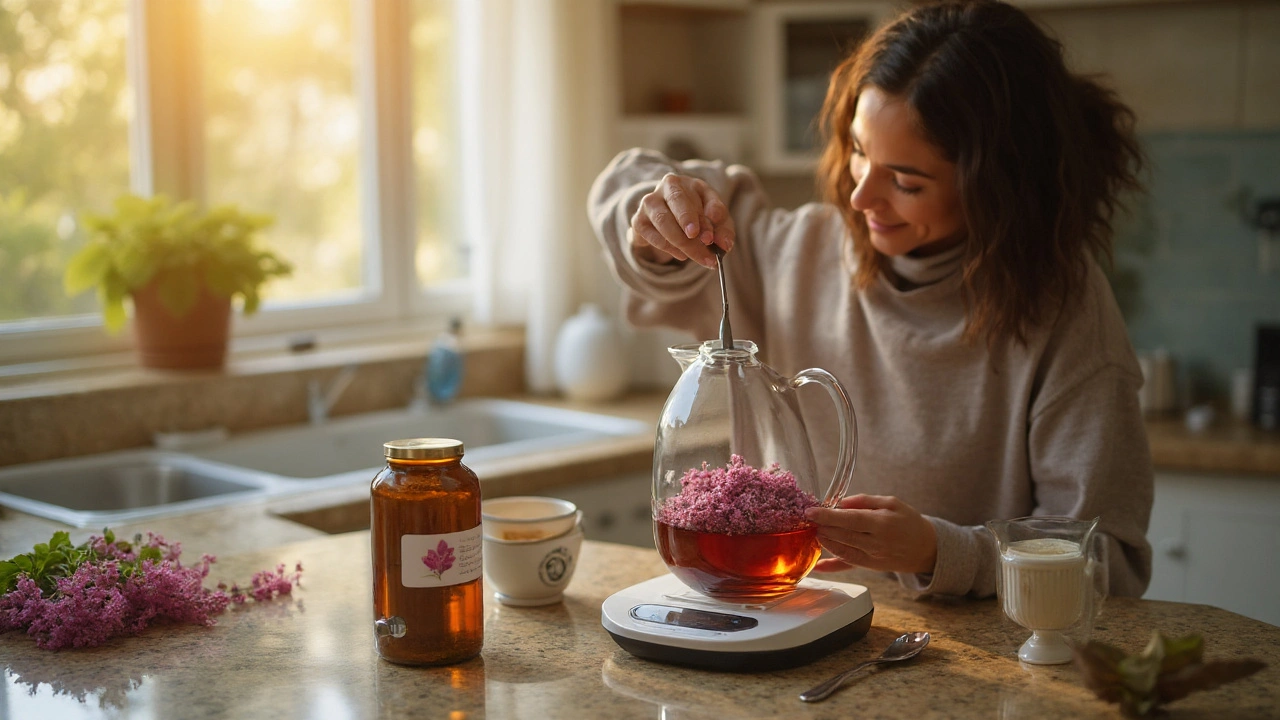Menopause Hot Flashes Tea: Herbal Teas That Help
Hot flashes can show up at any time, leave you sweaty and tired. Tea won’t fix menopause, but some herbal brews can reduce frequency, ease severity, or give fast cooling relief. Here are practical options and safe tips to try today.
Which teas can ease hot flashes
Sage has small clinical trials showing fewer and less intense hot flashes. Use dried sage (1 teaspoon) steeped in hot water for 10 minutes. Black cohosh is often used for hot flash relief; people take it as tea or capsule. Evidence is mixed, so watch for side effects. Red clover contains plant estrogens called isoflavones; some women notice fewer hot flashes, but results vary. Peppermint and spearmint don’t change hormones, but the menthol offers quick cooling that cuts the discomfort. Chamomile helps with sleep and tension, which can make hot flashes feel easier to handle. Green tea has gentle phytoestrogens and antioxidants, but caffeine may bother some women, so pick decaf if needed.
How to brew and stay safe
Steep time and strength matter. A standard cup is one teaspoon to one tablespoon of dried herb per 8 ounces of water. Peppermint needs 5 minutes; sage and chamomile do well at 10 minutes. Drink one to three cups daily and track symptoms for two weeks before changing herbs. Combine peppermint with chamomile for a calming, cool cup. Use fresh or organic dried herbs when possible.
Talk to your doctor before trying herbal teas, especially if you take blood thinners, hormone therapy, or medications for blood pressure or the liver. Avoid black cohosh if you have liver issues or a history of hormone sensitive cancer. Stop and seek help if you get severe symptoms, heavy bleeding, fainting, or new chest pain. Quality varies, so pick reputable brands and read labels. Herbal supplements can interact with other drugs.
Start with one cup of a gentle tea like peppermint or chamomile in the evening and try sage during daytime hot spells. Keep a short diary: note time, severity, and which tea you drank. If a herb helps, great. If not, swap after two weeks. For heavy or sudden symptoms, get medical advice fast. Tea is a gentle tool—use it wisely alongside other strategies like breathable clothing, cool showers, and stress control.
Simple recipe: steep one teaspoon dried sage plus half teaspoon dried peppermint in 8 ounces of water for 10 minutes. Strain and sip warm or let cool for fast relief. For sleep, brew chamomile with a slice of lemon and drink 30 minutes before bed. If you prefer supplements, look for standardized extracts and follow label doses. Track any side effects like nausea, headaches, or stomach upset.
Small changes add up. Tea is low risk for many women and can ease daily discomfort. Try one herb at a time, keep notes, and speak with your clinician if anything feels off. You can find relief with patience and smart choices, and pick quality brands for best results always.

Best Time to Drink Red Clover Tea: Timing, Benefits, Dosage, Safety
Wondering when to drink red clover tea? Get clear guidance on timing, dosage, and safety for hot flashes, sleep, digestion and more, with evidence-based tips.
view more